Incrementally updated on the specification front, the X-Trail's remains one of the few vehicles of its kind to offer seven-seats and all-wheel drive.
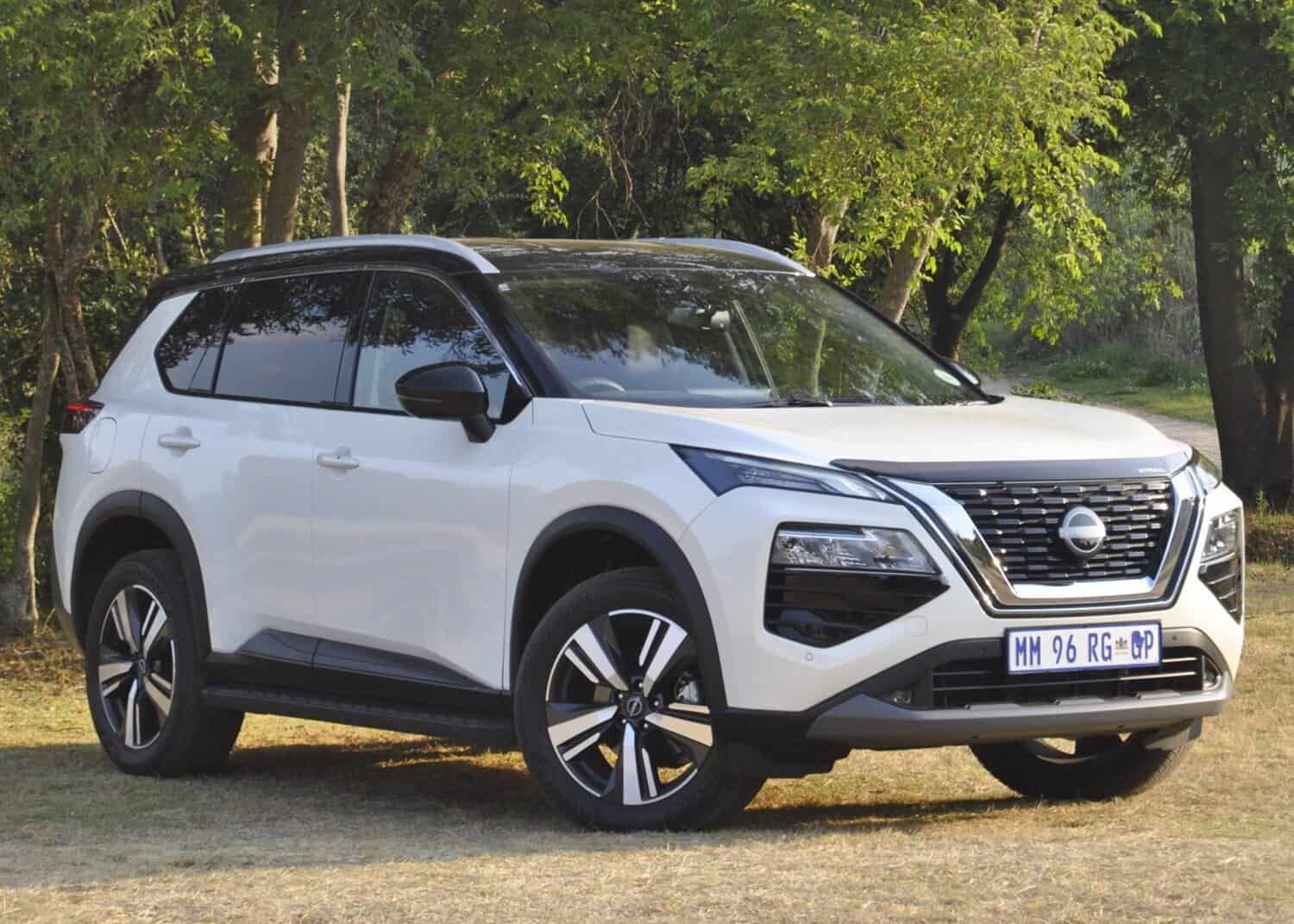
Two-thousand-and-twenty-five marks 25 years since the first generation Nissan X-Trail when it on sale in Japan and then later Europe.
Timelines in South Africa
Prior to the unveiling of the current fourth generation, internally named T30 in 2021, seven million units had been sold worldwide, including North America where it has been known as the Rogue since 2013.
Of these sales, 50 000 have been in South Africa where the original T30 debuted in 2001 as the effective replacement for the ladder-frame Terrano II.
ALSO READ: Price reduced as Nissan stickers ‘lightly updated’ X-Trail
Praised for its more modern design and 2.2-litre turbodiesel engine that replaced the Terrano II’s more agricultural 2.7 shared with the Hardbody, the more road-biased “soft-roader” X-Trail wasn’t immune from criticism, the biggest being the centrally placed instrument cluster.
Sales, though, climbed, and while the second generation T31 copped flack for its price tag and offering comparatively little over its predecessor, it remained popular, as did the more rounded third generation T32 that lasted over a decade.
The struggle
Fast forward to 2025, the picture has changed dramatically. Launched locally two years ago, the T33 has struggled to make the same impact as its forebears.
Most likely as a result not only of price, but also the lack of a diesel engine and prominence of more affordable options from China, only 246 X-Trails left dealership floors last year.
So far this year, matters have been bleaker with only 98 sales recorded between January and September.
A bigger picture
Nissan is, however, sticking with the X-Trail, which will form part of a five-model SUV model line-up in 2026 involving a pair of Renault-based models made in India, and the all-new Y63 Patrol.
Nissan’s flagship above the refreshed Magnite for now, the X-Trail has now become the recipient of not only a specification upgrade, but also a substantial price cut of between R40 000 and R100 000.
The second Nissan product to have its sticker reduced for a limited time after price cuts of between R10 200 and R40 800 were made to all turbocharged Magnites in August, the likely move to boost sales is still unlikely to fully restore the X-Trail to its former glory.
Off to a good start
That being said and although devoid of the subtle exterior upgrades applied to the Japanese market model two months ago, the arrival of the X-Trail for the week-long stay proved surprising for reasons not initially expected.
Offered in three trim levels, the test unit turned out to be the flagship Acenta+, the only variant to offer seven seats, all-wheel drive and a two-tone paint option consisting of a Pearl White body colour contrasted by a black roof.
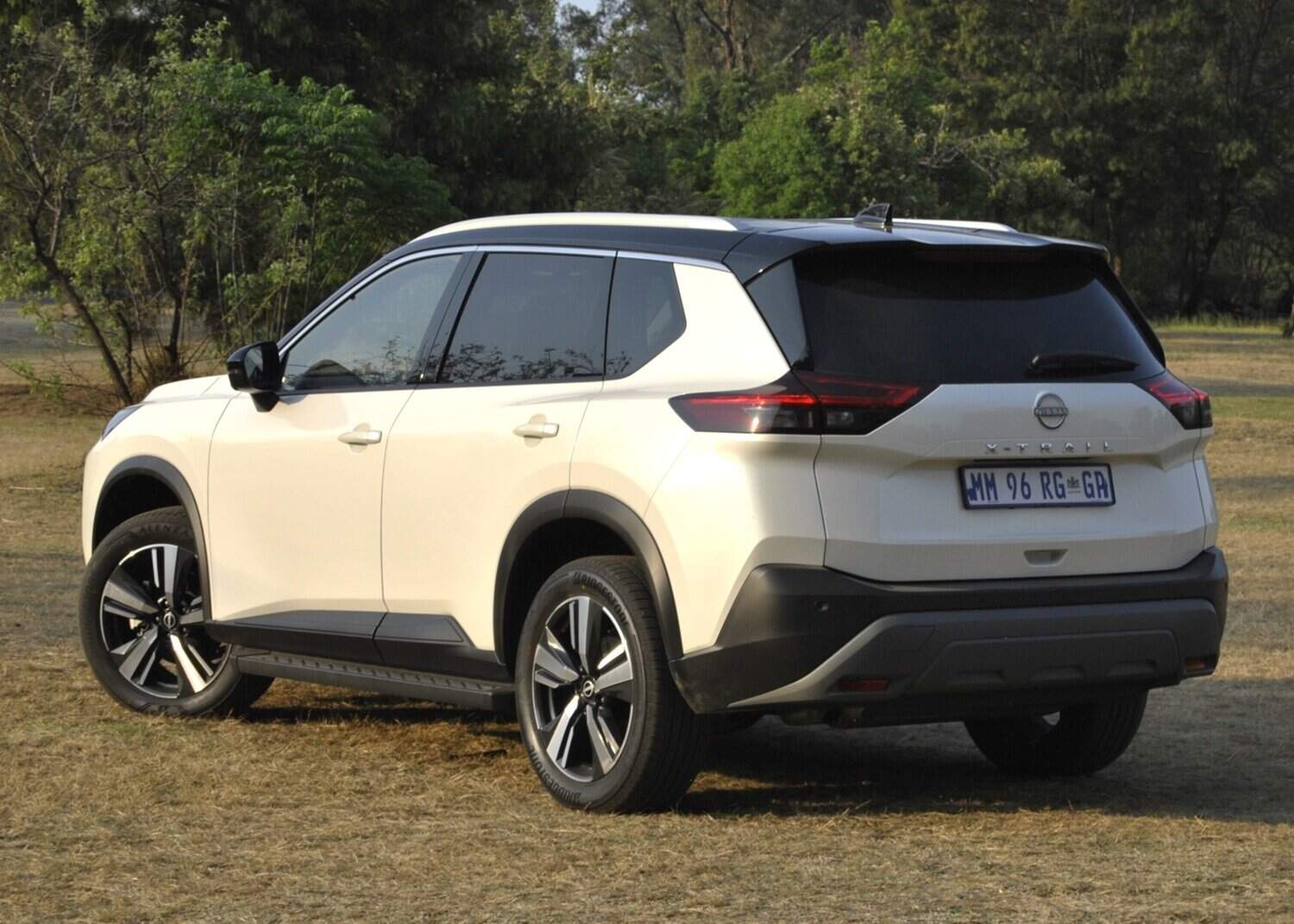
Fitted with a number of optional accessories comprising side-steps, blackened finishes on the front faux air inlets and a stone chip bonnet deflector, Nissan South Africa’s decision to otherwise not introduce the minor exterior changes as in Japan has not been to the X-Trail’s detriment.
As subjective as styling is, the X-Trail cuts an imposing and more eye-catching figure than any of the past three generations.
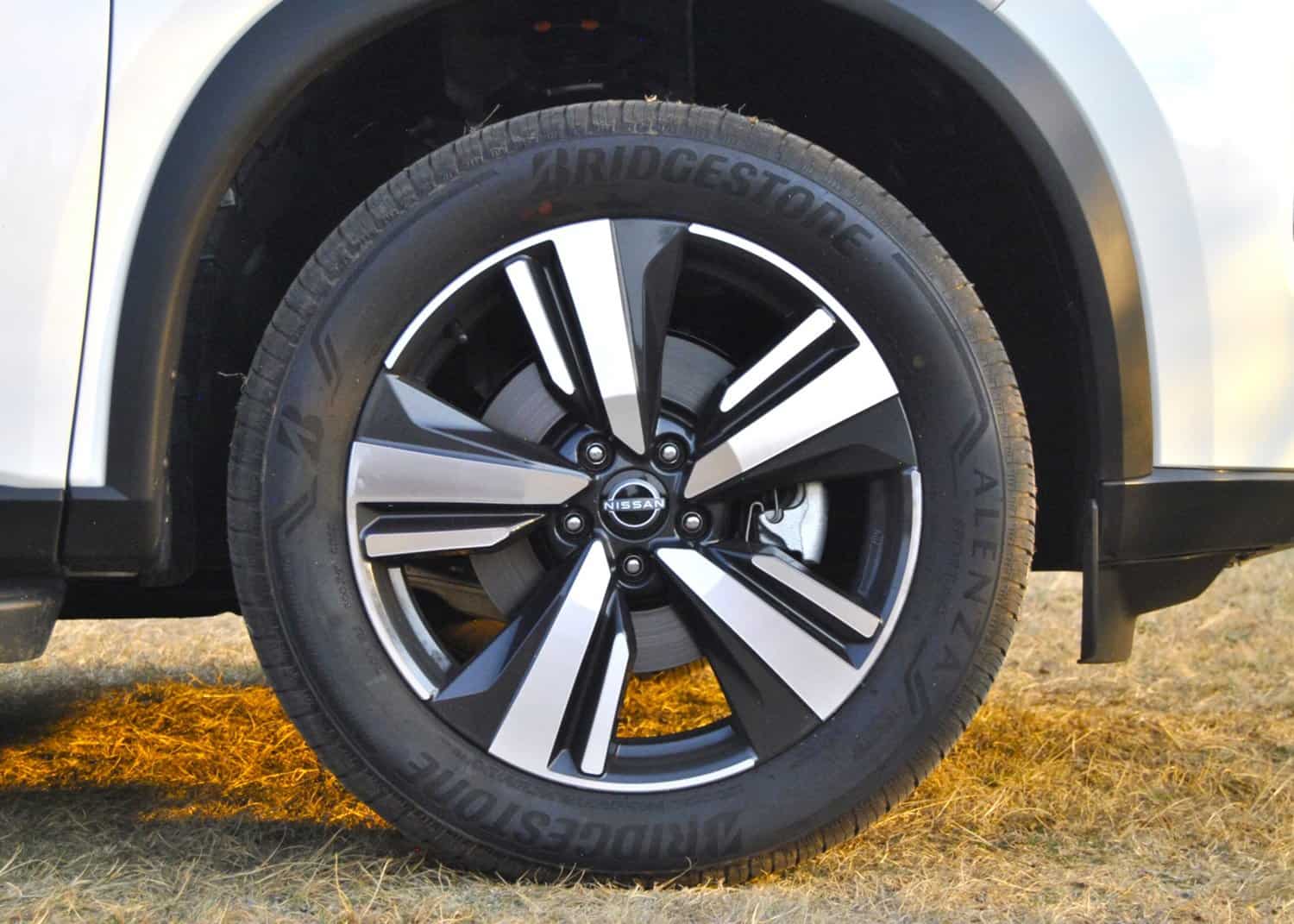
Apart from the trademark Nissan V-motion grille with a chrome surround, split LED headlights and 19-inch alloy wheels reserved only for the Acenta+, the X-Trail errs on the flamboyant side, though not as much as its platform rival, the Mitsubishi Outlander.
Arguably a bit more divisive than its other most immediate rival, the Chery Tiggo 8 Pro, the X-Trail is still a stylish looking thing and unlikely to fade into the background anytime soon.
Neat and simple inside
About as far removed from the critique that hindered the original, the X-Trail’s interior puts functionality and ease of use first instead of relying on the typical minimalist design and list of features to win buyers over.
Still heavily dependent on physical switchgear, the overall execution is neat and ergonomically sound with soft-touch materials present on most surfaces.
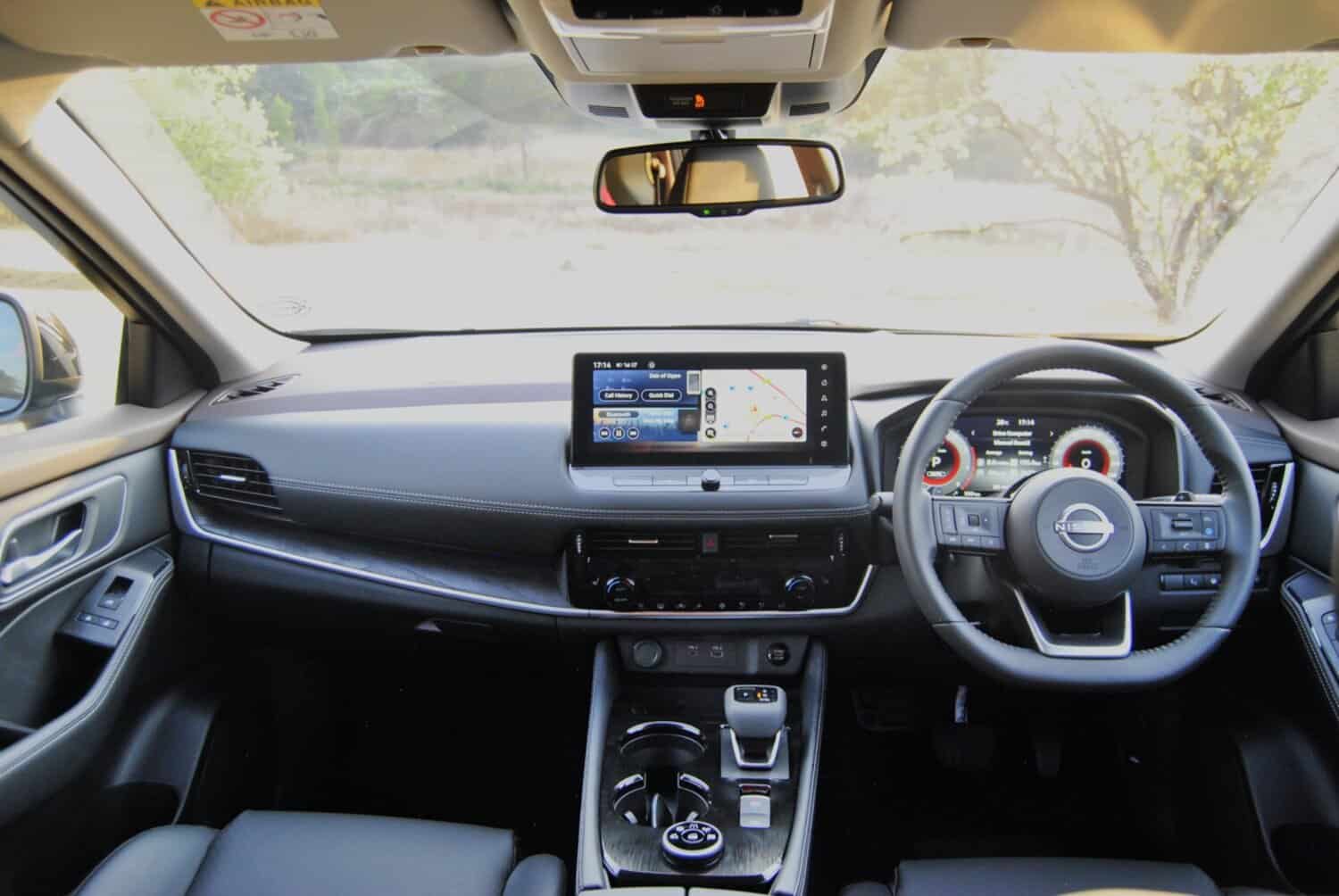
Despite the level of fit-and-finish being upmarket, the imitation wood veneer on the dashboard spoils matters somewhat, as does the grained-effect finish on the centre console.
Taking centre stage, the top-mounted 12.3-inch infotainment system, reserved exclusively for the Acenta+, works relatively easy as, apart from embedded satellite navigation, wireless Apple CarPlay and Android Auto, it features both physical and touch-sensitive buttons that work equally intuitively.
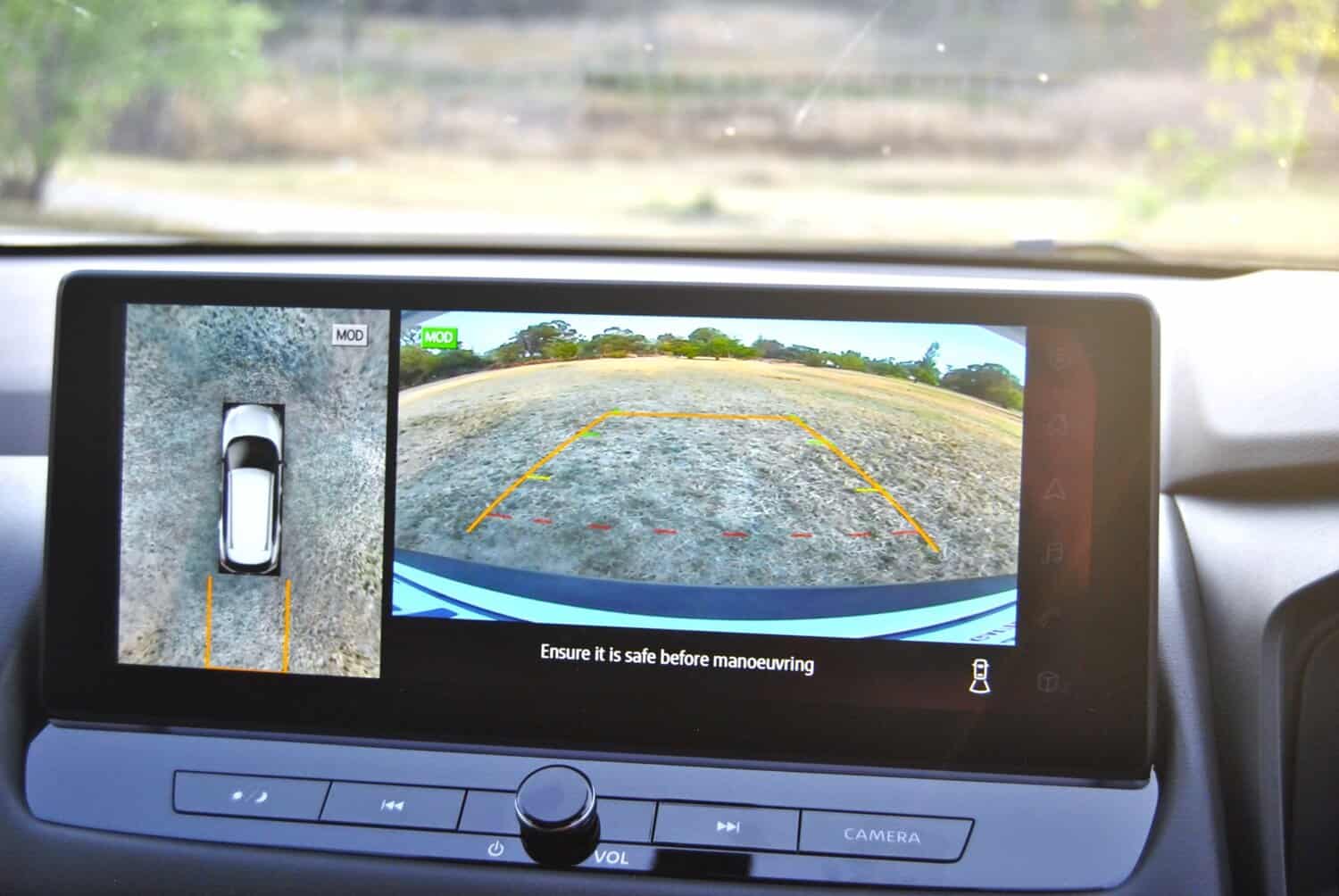
One of the best systems experienced in recent Nissans, the display also sports a dramatic improvement in resolution for the 360-degree camera system, however, the still grainy image at night proved less satisfying.
As for the rest of the interior, the Acenta+ is equipped with a 12.3-inch digital instrument cluster, a trim grade exclusive Head-Up Display and the same new spec additions as the lesser Visia and Acenta trim grades: a wireless smartphone charging pad and doors that automatically lock when walking away and unlock when approaching.
The good and not-so good
A comfortable and well devised place to be – the D-shaped steering wheel in particular being another standout – the cabin isn’t perfect as, apart from the wood trim, the third row is, unsurprisingly, on the tight side and reserved mostly for children.
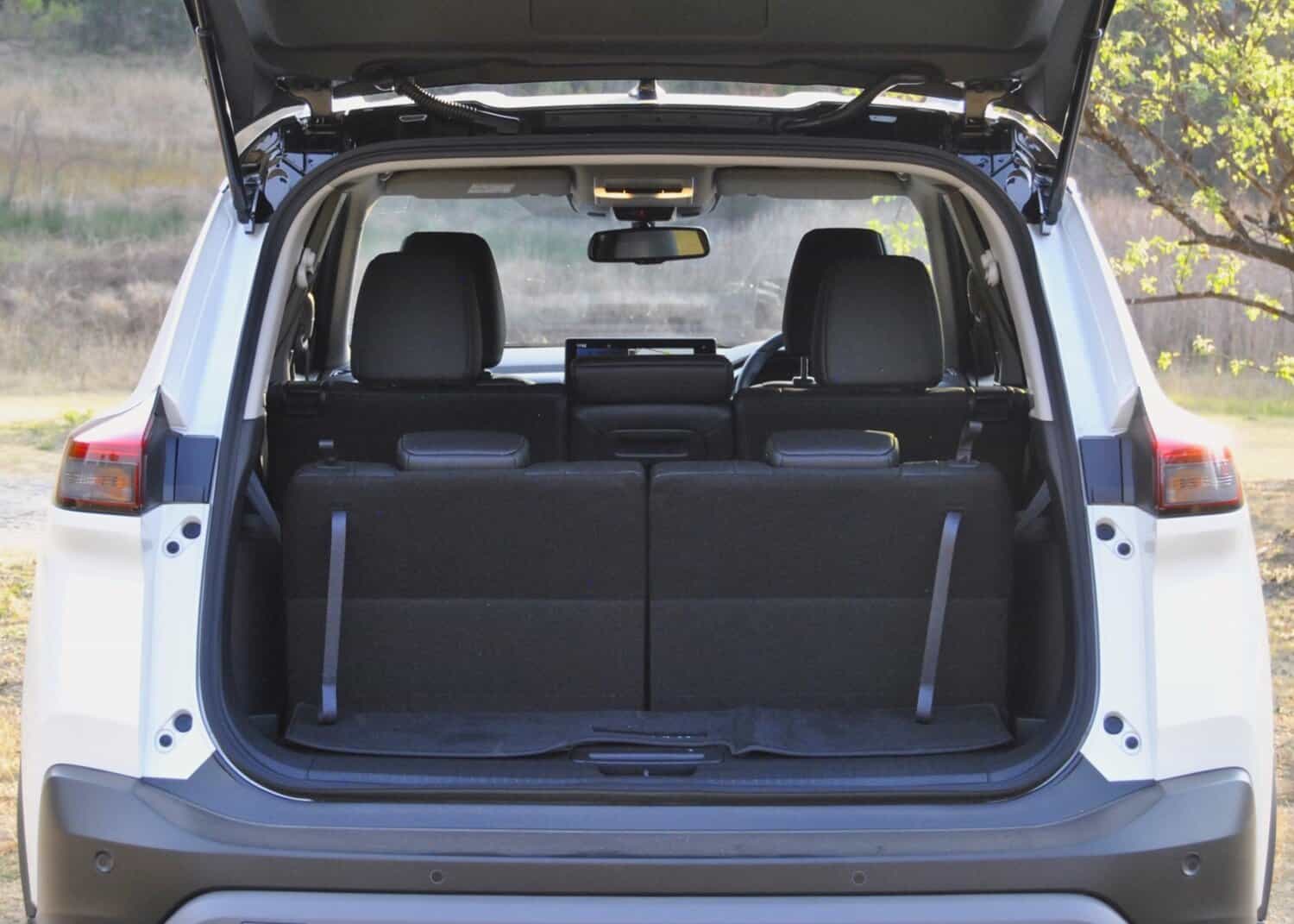
Not as easy to dismiss given the Acenta+ price tag, is the lack of an electric tailgate and electric adjustability for the passenger’s seat.
The chairs themselves, finished in imitation leather, are, however, heated and besides a decent six-speaker sound system and full-suite of safety and driver assistance systems, the Acenta+ also gets the ProPILOT semi-autonomous driving system as standard.
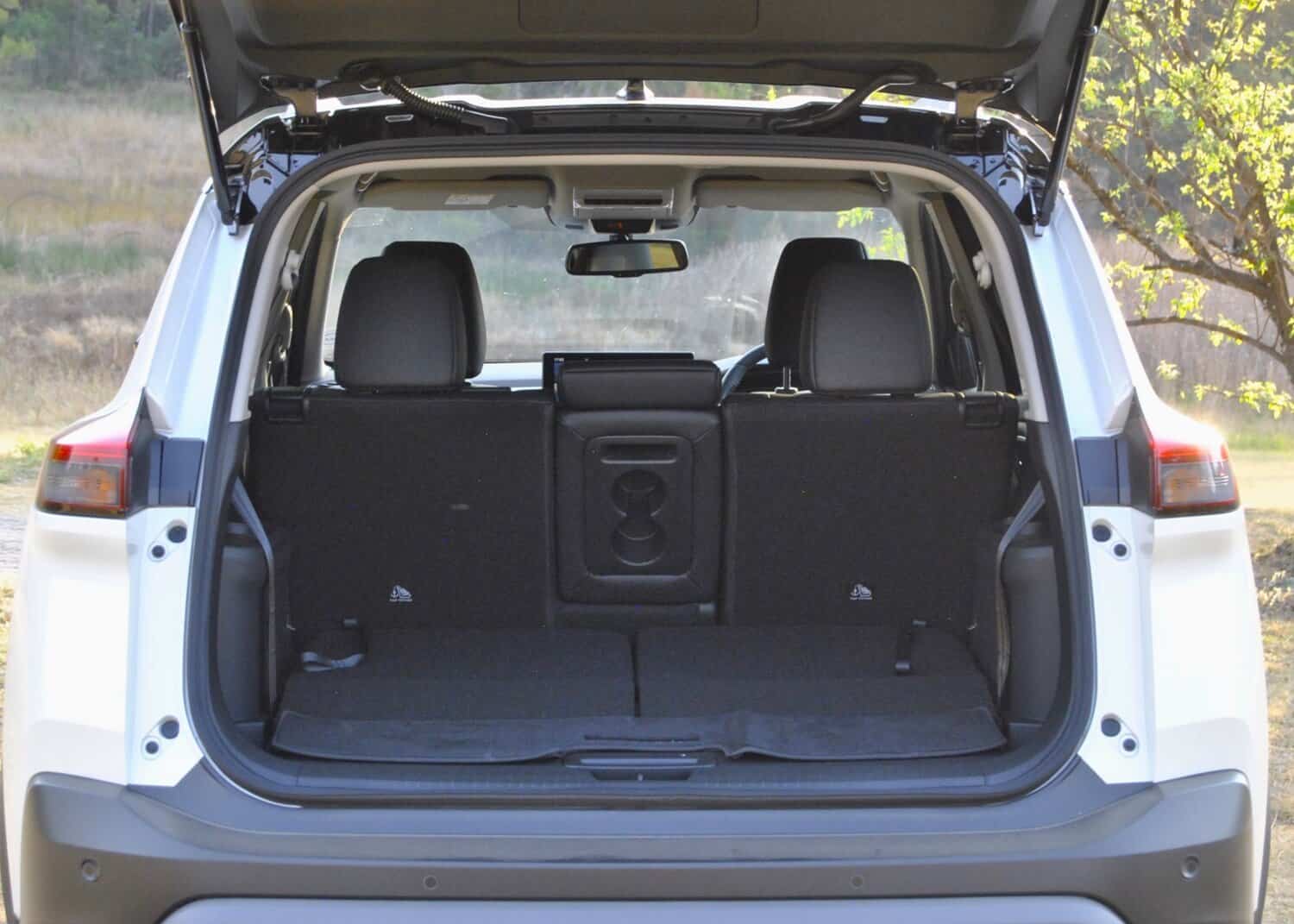
Making up somewhat for its tight third row, the X-Trail isn’t found lacking for overall cabin space, with head and legroom in the second being particularly impressive.
On the practicality front, boot space comes to 485 litres with all seven seats in use, but expands to 651-litres in five-seat guise.
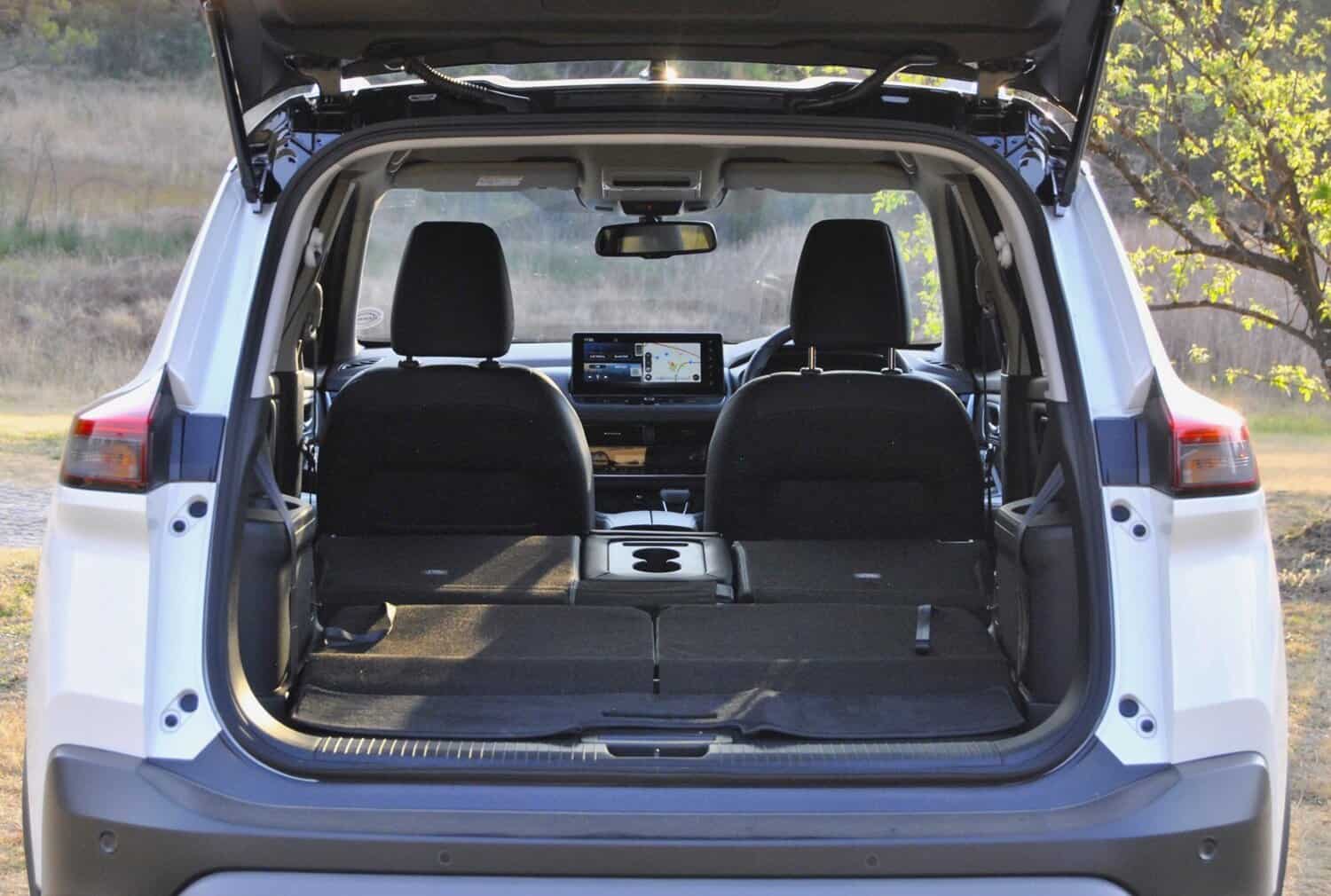
With the second row also lowered, utility space maxes out at a somewhat meagre-sounding, but bigger in appearance, 1 298-litres.
Drive surprise
As mentioned during the comparatively short drive at the X-Trail’s unofficial launch in August, the real surprise is its overall feel on the move.
Although under consideration for South Africa as the de facto diesel replacement, the e-Power unit, which relies on its battery pack and electric motor for propulsion rather than the turbocharged 1.5-litre petrol engine, remains off limits for the time being.
As such, the X-Trail continues to rely on the combination of the normally aspirated 2.5-litre petrol engine mated to a CVT.
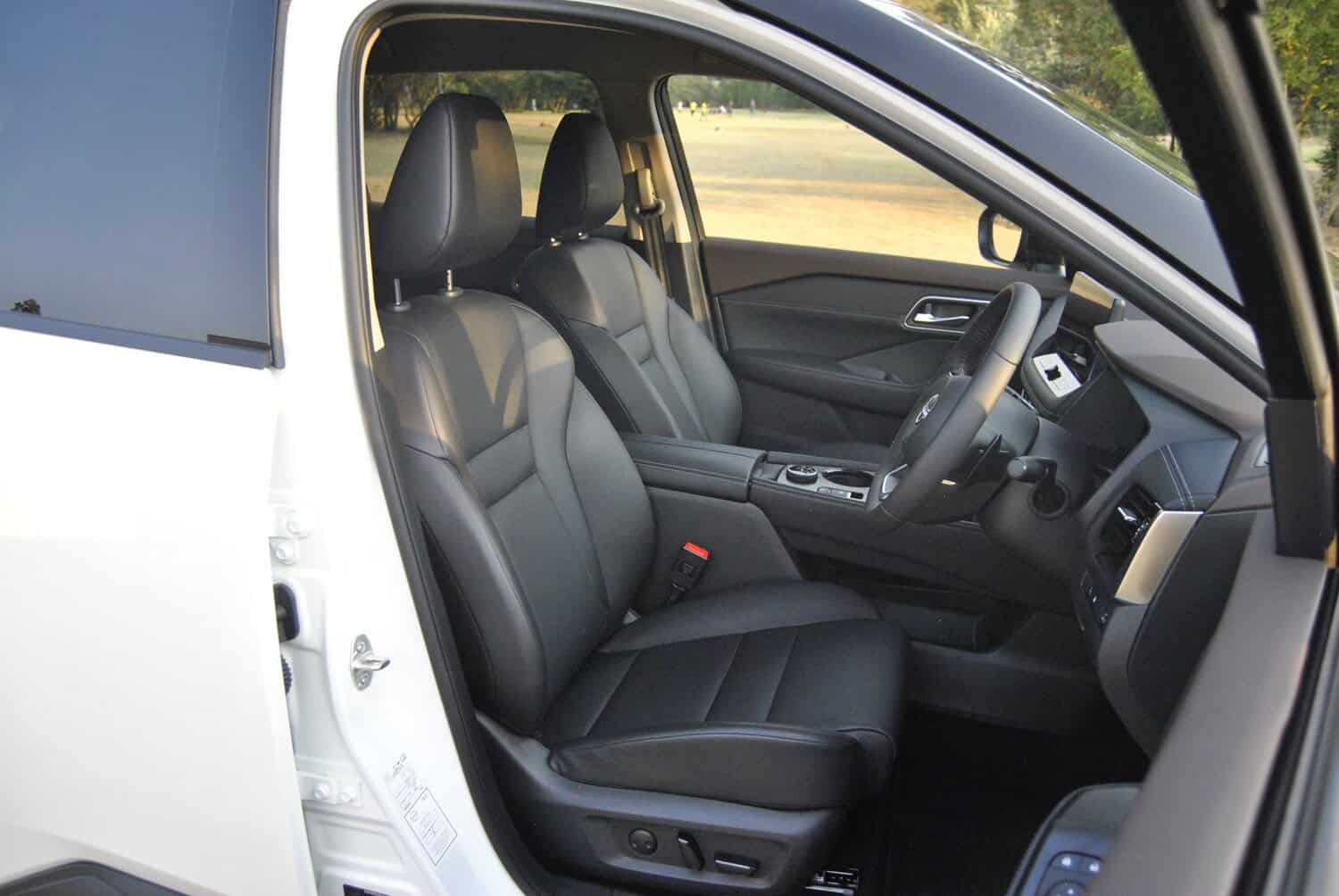
Outputting 135kW/244Nm, the unit sounds underpowered on paper, given not only the X-Trail’s unladen 1 625 kg kerb mass, but also pending power reduction at the Highveld.
Devoid of the low-down lag associated with turbocharged engine though, the big displacement petrol delivers a leaner power delivery that starts coming on song as the rev climbs.
For its part, the CVT, with its blocky selector lever, rates as one of the better options currently available.
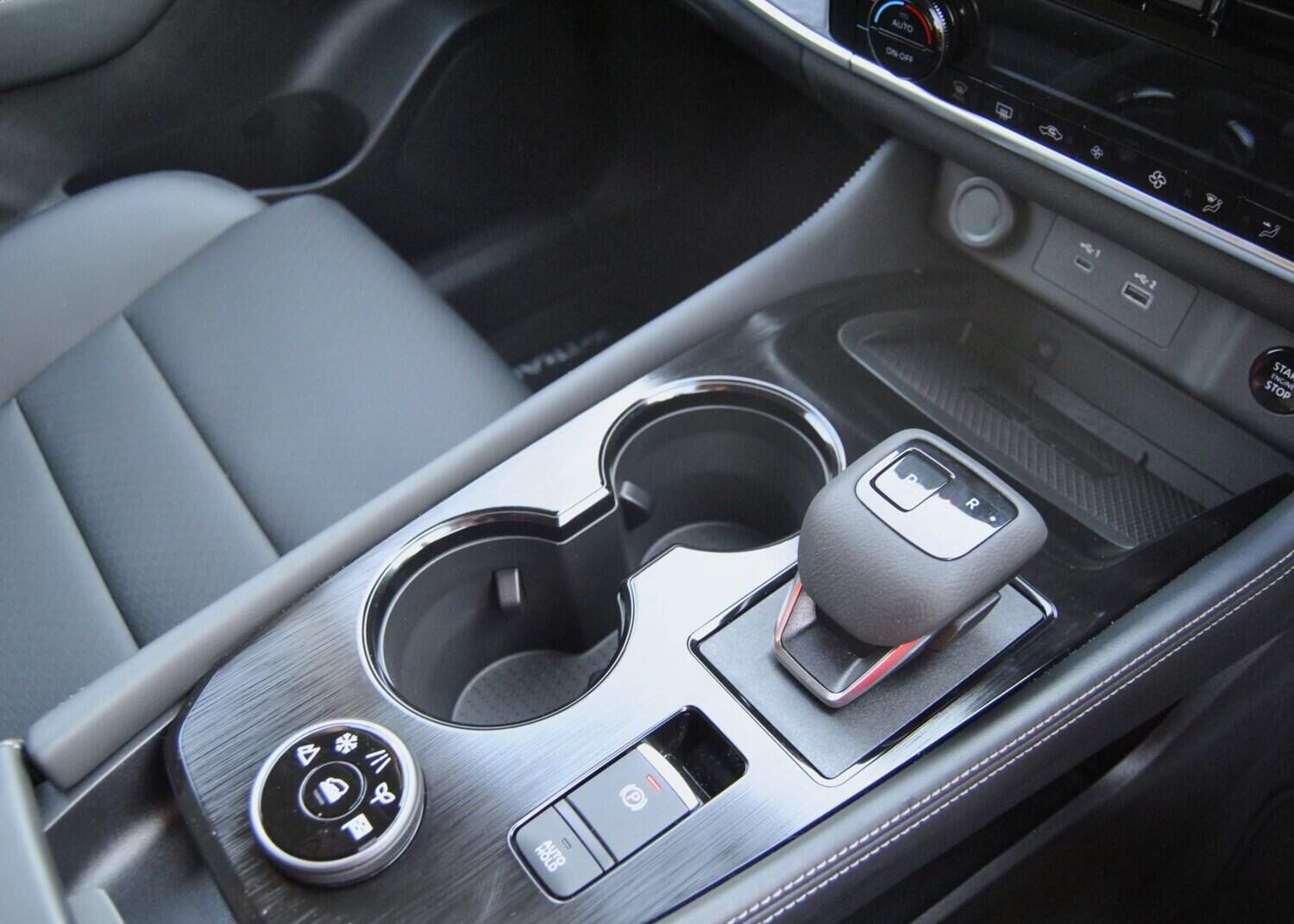
Though not completely relieved of the persisting drone step-less transmissions are known for, the noise settles down quickly and sees the ‘box take on a shifting fashion almost similar to a normal torque converter automatic once on the move.
As standard, paddle shifters allow it to be overridden, however, much of the seven days saw it being left to its own devices where it proved typically CVT smooth in everyday stop-start conditions.
Sure-footed thanks to the all-wheel drive system, the X-Trail plays its biggest strength on the ride front.
Composed, comfortable and refined with little noise intruding into the cabin, the praiseworthy ride quality extends to the steering, which proved direct, sharp and with a weighted feel for a vehicle of this type.
Drinking to a minimum
Given its powertrain and kerb weight, little was expected of the X-Trail’s fuel consumption as the official figure quoted by Nissan itself stands at 7.8 L/100 km.
As standard, the Acenta+’s drive mode selector sports five settings: Eco, Normal, Sport, Snow and Off-Road.
Kept in Normal for the majority of the seven days and eventual 249 km, the final readout displayed on the instrument cluster bettered Nissan’s claim by 0.2 L/100 km, a figure made even more noteworthy as the test unit’s engine hadn’t fully loosened-up as evident of it having done less than 500 km.
Conclusion
Nissan’s precarious financial position has been a topic of much discussion over the last few months, yet it maintains that Africa and by extension, South Africa, has escaped largely unscathed compared to North America and China.
Although this will undoubtedly come as reassurance to buyers waiting for the brand’s rumoured local market exit, which it has vehemently denied, the X-Trail still finds itself in a tough spot despite being a solid, well-equipped and dynamically sorted C-segment SUV.
The crunch factor remains price and although the limited time price cut knocks R63 000 from the Acenta+’s R812 000 price tag, it is still too expensive and unable to beat the value presented by the Chery Tiggo 8 Pro 390T Executive AWD’s R731 900 asking price.
Viewed on its own and as a way of pleasing the Nissan faithful, it makes for a worthwhile consideration if, sadly, no longer the mainstream player it once was.
NOW READ: WATCH: All-new Nissan X-Trail takes fight to Toyota RAV4






